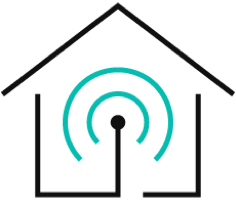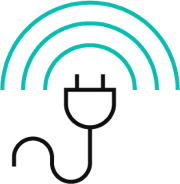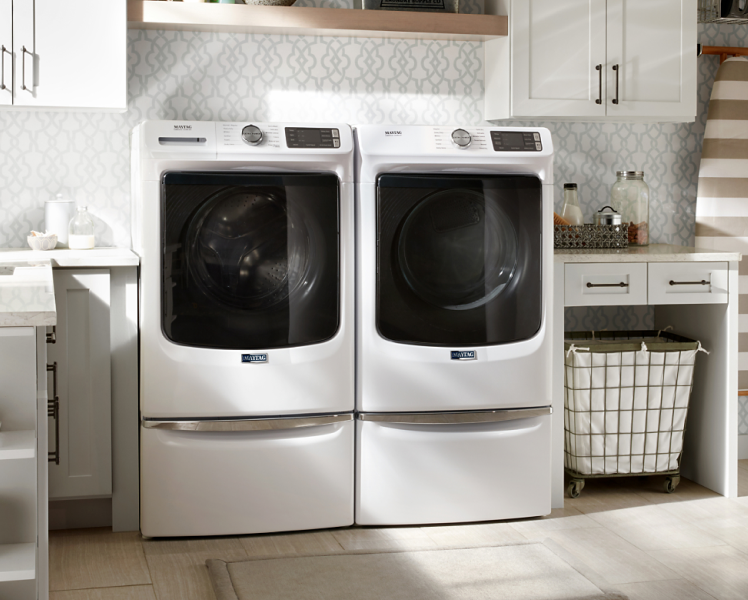Do you often find yourself wondering where your hard-earned money disappears when you pay your electricity bill? Maybe you are not the only one. The cost of electricity per month can be a source of mystery. At the same time, it can be a frustration for many homeowners. That is why you should use an electricity cost calculator.
With an electricity cost calculator, you no longer need to guess, "How much does electricity cost per month?" In addition, it will give you control over your energy expenses. However, many of us are unaware of the significance of an electricity cost calculator.
So, let's roll up our sleeves and explore how you can make sense of your electricity costs by using this handy tool.
- Gas vs Electric Cost For Your Home
- Average Cost of Electricity Per Month
- How Do I Calculate How Much Electricity I Will Cost?
- Importance Of Home Energy Monitor
- EVVR Energy Monitoring Smart Plug and Relay: How Can It Help Monitoring Home Energy?
- How EVVR Products Can Save You From Higher Maintenance and Utility Bills?
Gas vs Electric Cost For Your Home
Many of us struggle when managing our homes’ energy expenses. Then, it becomes complicated to make informed decisions. Ultimately, it comes down to 2 options - using gas or electricity for our home's energy needs. So, it is important to understand gas vs. electric costs.

Electricity Cost:
First of all, let’s get a grasp of how electricity costs work. Your monthly electricity bill is determined by the electricity cost per kWh (kilowatt-hours). The average cost of electricity per month varies depending on your location and usage. You can easily calculate your electricity cost using an electricity cost calculator.
Gas Cost:
On the other hand, natural gas is commonly used for heating, hot water, and cooking. Like electricity, your gas bill also depends on usage. The cost of natural gas is often measured in British Thermal Units (BTUs). Gas prices can fluctuate, so it is essential to stay updated on current rates.
Comparing Costs:
Now, let's compare the costs. Generally, electricity tends to be more expensive per kWh than natural gas per BTU. However, you should take the overall energy efficiency of your appliances into account. Afterward, learn how to use them accordingly.
If you have an all-electric home, your monthly electricity cost could be higher, especially in colder climates where electric heating is less efficient.
If you are wondering, “How much does electricity cost per month in an apartment?” The cost may vary. Often, apartments have less insulation. Plus, heating or cooling can be shared among units. So, you may have limited control over your heating system. However, this can reduce your monthly energy expenses.
Ultimately, gas vs. electric costs come down to your specific circumstances. But you can always consider the following factors:
- Location: Electricity costs can vary significantly from one place to another.
- Energy Efficiency: Using energy-efficient appliances can save on both electricity and gas bills.
- Personal Preferences: Some people prefer the convenience of electric appliances, while others may opt for gas for its cooking precision.
Average Cost of Electricity Per Month
From the survey of the Bureau of Labor Statistics Consumer Expenditure in 2022, the net household earnings were $94,003. In the same year, the average total cost was $72,967. But remember, this can vary from state to state due to different electricity costs and household needs.
The good news is, you can save more on your electricity costs. In fact, studies show that most households use only about 65% of what they spend each month. The rest? Well, it is wasted, often due to vampire appliances that use electricity even when "off."

So, what is causing your electricity bill to be so high? Let's find out by looking at which appliances are the culprits:
- Heating and Cooling (45-50%): Your heating and cooling system is the top energy consumer in your home, no doubt. Compared to cooling, heating usually takes the bigger share. This system accounts for over 25% of your yearly electricity usage.
- Water Heater (12%): If you have an electric water heater, it is likely the second biggest energy hog in your home. Due to various purposes, bills associated with water heating add up. So, the water heater can be a significant energy consumer each month.
- Lighting (9-12%): Even though lightbulbs have become more energy-efficient, they still make up a considerable portion of your monthly electricity usage. LED bulbs are your best bet as they use less energy, last longer, and cost less to run.
- Refrigerator (8%): Your refrigerator doesn't use a lot of energy per hour. But the fact is, it is always on, which adds up to its monthly energy consumption.
- Washer and Dryer (5%): The energy usage of your washing machine and dryer depends on how often you do laundry. On average, laundry accounts for about 5% of your annual electricity usage.
- Electric Oven (3%): Cooking, especially with an electric oven and cooktop, is energy-intensive. Electric ovens contribute to about 3% of your monthly electricity usage.
- Dishwasher (2%): The dishwasher is relatively energy-efficient. Typically, it accounts for around 2% of your monthly electricity consumption.
- TV and Cable Box (2%): Modern TVs and cable boxes are energy-efficient. However, they often run in standby mode, consuming electricity even when not in use. As a result, these devices can increase 2% of your monthly electricity.
How Do I Calculate How Much Electricity I Will Cost?
To figure out how much electricity costs for your devices, you will need to use the unit of electrical energy, which is the kilowatt-hour (kWh). This is calculated by multiplying the power use (in kilowatts, kW) by the number of hours the device is in use. After that, multiply the result by the cost per kWh.

Let's break it down:
Total energy cost = (Power in watts/1000) × hours operating × cost per kWh
A cost calculator for analog devices can make this calculation even easier. The first step is to determine the power consumption of your device. For that, the most accurate way is to measure its usage with a power meter. In the US, these meters are available for $20 to $60.
If you don't have a power meter, you can check the label on the product. However, be aware that these labels often show the maximum power, which might be more than the device actually consumes. For fixed-power devices such as light bulbs, the label is usually accurate.
Don't forget to consider any attached accessories, like a computer's display. You may need to do a bit of math to calculate the usage in watts.
Power (watts, W) = Current (amperes, A) × Voltage (volts, V)
For example, if you have a device that operates on 3A and runs on 120V (standard U.S. house current), you can calculate it like this: 3 × 120 = 360W.
Importance Of Home Energy Monitor
A home energy monitor is like a detective for your electricity use. It tracks how much power your appliances and gadgets are gobbling up. It helps in monitoring home energy, which can inform you about your electricity cost per kWh. Eventually, you will understand how much you are spending every month.
According to the experts, the energy we don't use is often referred to as "watts we don't use." This energy is not only the cheapest power source but also far more economical than building new power plants.
The first step in this energy-saving journey is awareness. We need to start thinking about how to save power. When we think of cutting back, we often consider the big appliances. But there's a catch—those smaller devices that hum along quietly all day might secretly be guzzling up substantial amounts of energy!
You will be surprised to know that even a seemingly innocuous device like a media server in a home could cost a staggering $473 a year in electricity. However, the use of these small devices is often overlooked. But, this tendency needs to change if we really need to be aware of the cost of energy usage.
Let's break it down. When you know how much electricity you are using, you can take steps to reduce your consumption. A home energy monitor can empower you to make smart choices. It is like having an electricity cost calculator right at your fingertips.
Imagine being able to lower your electricity bill without sacrificing your comfort. By monitoring your energy usage, you can find ways to save. So, no more wondering, "How much does electricity cost per month?" You will have the answers.
In a nutshell, a home energy monitor is your energy-saving sidekick. It simplifies complex information and puts you in control of your energy usage.
EVVR Energy Monitoring Smart Plug and Relay: How Can It Help Monitoring Home Energy?
In this era of smart gadgets, you might be tempted to replace your old gadgets with new ones. One of the standout tools for this transformation is the EVVR Energy Monitoring Smart Plug & Relay. The EVVR Energy Monitoring Smart Plug and Relay offers a simple and effective way to keep tabs on your energy consumption. Here is how it works:
Connect Your Appliances
First, you connect your household appliances directly to the EVVR Smart Plug. This direct connection allows you to monitor how much electricity these devices are using in real time.
Use the Relay
But that’s not all. If you have appliances with different types of power cables, you can still monitor them smartly. Just connect the relay to your power source and DIY your very own energy monitor for your home.
To wrap up, you need to link your appliances through the Smart Plug and use the relay for compatibility. This is how you will know how much energy you are using and, in turn, how much it costs.
How EVVR Products Can Save You From Higher Maintenance and Utility Bills?
The EVVR Center Lite is an innovative home automation solution that ensures efficient management of your smart devices. And efficient management can lead to lower utility bills. It has the ability to operate your smart devices locally without relying on the internet. So, you can reduce your data consumption, resulting in lower internet bills.
Moreover, local data processing and storage enhance security and reduce the risk of data breaches, potentially saving you from costly security incidents. During power outages, the backup battery ensures your home automation system remains functional. By preventing potential damage, it will keep you worry-free about maintenance costs.
Energy efficiency was the prime thing in mind while designing the EVVR Energy Monitoring Smart Plug & Relay. It can accurately track the energy consumption of your plug-in device. Consequently, you will be empowered to make informed decisions about energy usage.
Predicting power consumption through the EVVR App allows you to optimize energy efficiency, potentially leading to reduced energy bills. The Magnetic Retention Relay's lower energy consumption (90% less than other products). So, it not only saves you on energy costs but also extends the lifespan of your devices.
To top it off, the EVVR App will send you real-time notifications to stay informed about your home's status. This can prevent costly maintenance issues from escalating. If you have multiple properties or locations to manage, the ability to monitor and receive real-time notifications from various places in a single app can save you time and money.
Final Word
Don’t think of an electricity cost calculator as a mere tool. It is a game-changer that empowers you to understand, control, and ultimately reduce your electricity costs. If you have come this far, you should be able to make your home more energy-efficient. As a result, you can save money and reduce your environmental footprint.
So, don't wait any longer—utilize the electricity cost calculator now. If you still have any queries regarding DIY home energy monitoring, then feel free to contact us.
















